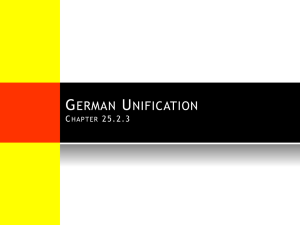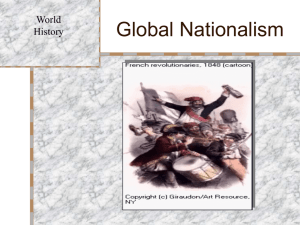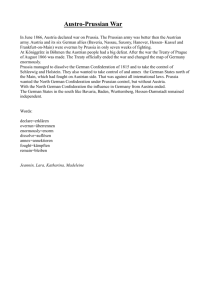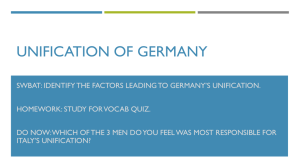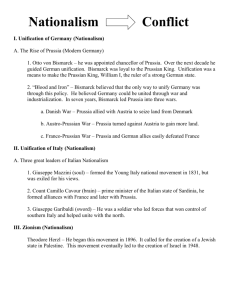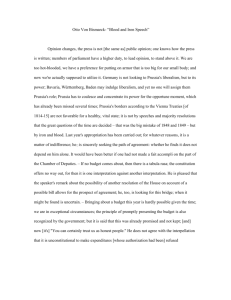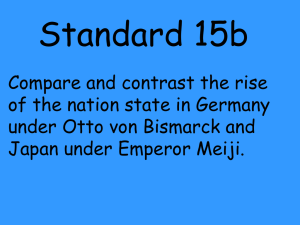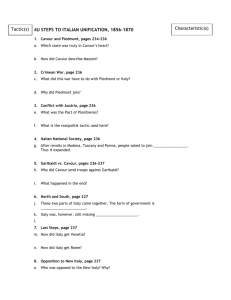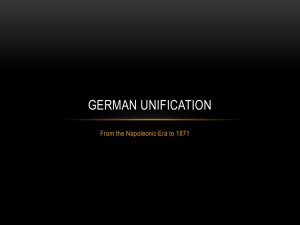German Nationalism and Unification
advertisement
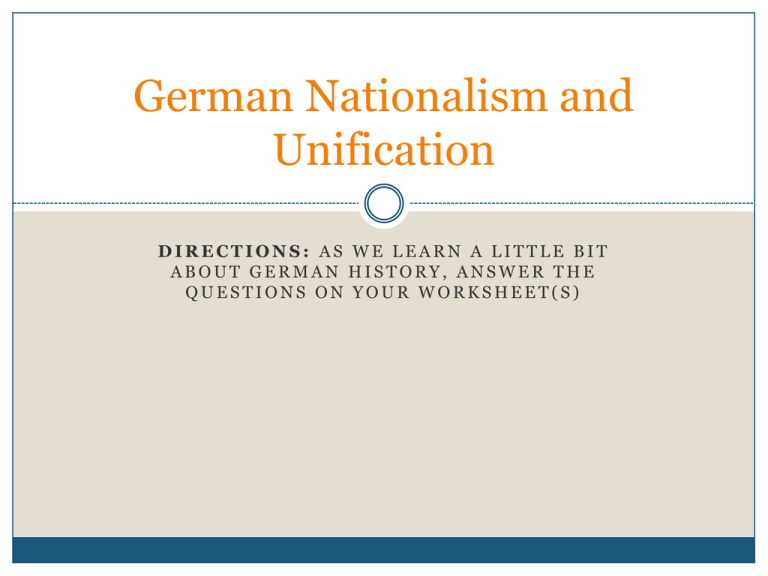
German Nationalism and Unification DIRECTIONS: AS WE LEARN A LITTLE BIT ABOUT GERMAN HISTORY, ANSWER THE QUESTIONS ON YOUR WORKSHEET(S) German Unification Last major European power to unify By the 19th century (1800s) 39 independent states – largest = Prussia Smaller states feared domination by Prussia Austria feared economic competition of a unified Germany German Unification Steps Toward Unity 1834 = Zollverein (literally means “Customs Association” created economic union between the German states; reduced trade barriers This strengthened Prussia’s power Leader of German Unification Otto von Bismarck = Premierminister) = prime minister of Prussia Wanted strong government & army unification would come through “Blut und Eisen” Embraced Realpolitik = right of a country to pursue its own advantages by any means, including war War Against Denmark Denmark ruled Schleswig and Holstein = large German populations there Bismarck formed a temporary alliance with Austria They won Prussia got Schleswig Austria got Holstein War showed Prussia’s military might Increased tension between Prussia and Austria Austro-Prussian War (7 Weeks’ War) Bismarck formed alliances with Russia, France, and Italy Prevented them from forming alliances with Austria Bismarck declared war on Austria He won Austria gave Holstein to Prussia Austria gave Venetia to Italy Franco-Prussian War France = a threat to a united Germany France demanded some territory from Prussia as compensation for their alliance in the last war Bismarck declared war on France He won Prussia gained the French territory of Alsace- Lorraine = major industrial site Alsace-Lorraine Unified Germany Unified in 1871 1st Kaiser (emperor) = Wilhelm I Bismarck = Reichskanzler (Imperial chancellor)


